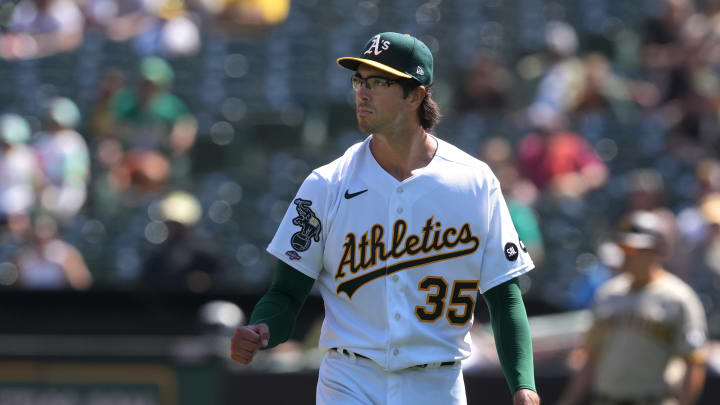A's Trade with the Cincinnati Reds a Rare Win-Win

The 112-loss A's had some issues. One of the main ones is that they finished just better the Colorado Rockies in team ERA (5.48 to 5.68) while Oakland is considered a pitcher friendly ballpark and Coors Field favors batters. If you account for those park factors, the A's had the worst staff in baseball and the Rockies move up to 25th. The A's were nearly 20% worse than the 29th-ranked Kansas City Royals.
Issues.
That all said, the A's pitching really struggled in April, posting a 7.72 ERA, easily ranking 30th among 30 teams. Over the course of the season new pitchers were brought in and given an opportunity, and by the end of the year the team posted their best ERA in any month in September with a 4.54. Still not quite at the league average 4.35 ERA for the month, or the 4.33 league average ERA for the season, but it's the closest they got all year, and that provides a little bit of hope that the pitching staff could be a little better next season.
One big addition that made his presence felt was right-hander Joe Boyle, who was acquired in the Sam Moll trade with the Cincinnati Reds at the Deadline. Standing at 6-foot-7, Boyle throws gas, averaging 98 on his fastball. The big problem for him when he was in the Reds' system was that he was having trouble locating his pitches, walking 19.4% of the batters he faced while striking out 31.5%. The A's took the gamble, and so far it's looking like a win.
Boyle cut the walks to ten percent in three Double-A starts with the Midland RockHounds while upping his strikeout rate to 40.6%. He was bumped up to Triple-A Las Vegas where he still issued walks at a high mark (16%), but only allowed eight hits in 16 innings. He was called up to Oakland in the middle of September to see what he had, and he allowed just one hit and two walks in three innings against a stout San Diego Padres lineup. That outing gave him a look in more of a full fledged start against the Tigers, and he went six innings, walked one, gave up an unearned run, and struck out five.
In his final start against the Angels, he didn't allow a hit for the first six innings. He ended up walking one, giving up a double and then a homer in the seventh, which gave him a 1.69 ERA for the season, but he had already made quite an impression. If with his relative lack of experience, he figures to be in the mix for a spot in the A's rotation come Spring Training.
Boyle said that sticking to his process is how he has had success since coming over to the A's. "It's really just as simple as filling it up, getting ahead of guys. Sticking to my strengths. Just focusing on what I can control out there versus things that are completely out of my control."
Among all A's pitchers, Boyle had the best "stuff" as measured by Stuff+ on FanGraphs with a 132 (100 is league average). The pitcher closest to him on the staff was unsurprisingly Mason Miller at 125, but what was surprising was that Boyle's command (location+) actually rated better than Miller's. Boyle was exactly league average at 100, while Miller was slightly below at 96.
With any trade, people want to declare winners and losers. In this particular deal, Boyle for Moll, both teams seemed to get what they needed. The A's got a potential piece for their rotation for the next six years that will be a work in progress, and the Reds got a legit bullpen piece that should help them as they chase a postseason berth in 2024. Moll posted a 0.73 ERA across 24 2/3 innings with the Reds with a 0.973 WHIP. His ERA ranked sixth among relievers over the final two months of the season, and his fWAR of 0.6 was the same as Bryan Abreu of the Houston Astros who didn't allow a single run in that span.
The A's will end up getting more innings from Boyle with him being a starter, but Moll can be a crucial reliever if he's consistently getting the team out of jams. This could end up being as close to a win-win as we see from a trade.
The determining factor that could swing that balance of power in one team's favor will be how Boyle's command plays in 2024 and beyond. If he's still posting an 8% walk rate in the big leagues, this could end up being a steal for Oakland. If his walk rate swings the other way and we see more uneven outings from the right-hander, then the Reds will be just fine with the dependable lefty.
